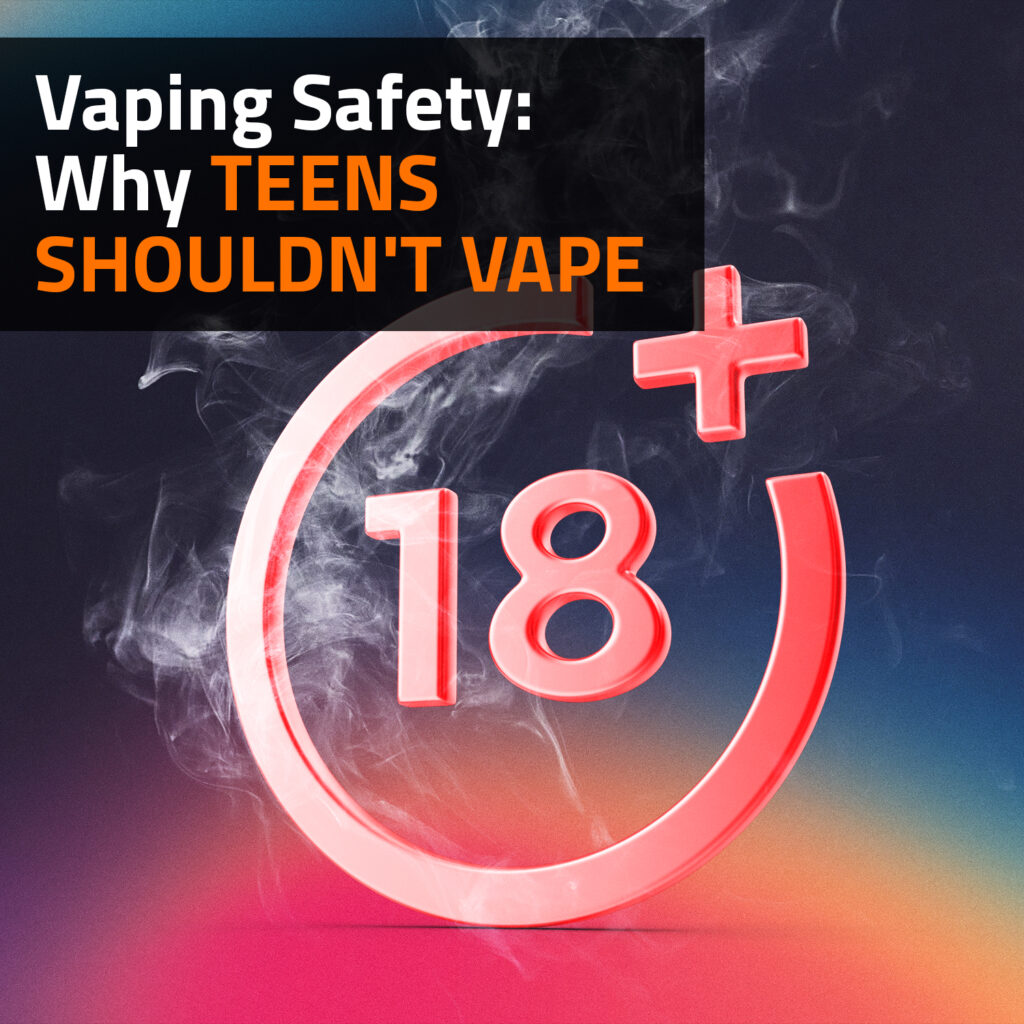Over the past decade, vaping has emerged as a popular alternative to smoking as it is a safer option for smokers looking to quit. However, the increasing prevalence of vaping among teenagers raises serious concerns. While vaping may offer harm reduction benefits for adults, its use by teens poses unique risks to their health and development. Understanding why teens should not vape requires a closer look at the physical, psychological, and social implications of this growing trend.
The Appeal Of Vaping Among Teens
Teenagers are particularly susceptible to trying vaping due to its accessibility, enticing flavours, and perceived harmlessness. With sleek devices, colorful packaging, and names like “Candy Crush” or “Mango Tango,” vape products often appeal to younger audiences. Social media platforms amplify this allure, showcasing vaping as trendy and socially acceptable.
Many teens view vaping as a less harmful alternative to smoking, believing that it does not carry risks such as nicotine addiction. However, this assumption overlooks the significant dangers tied to vaping for adolescents.
Nicotine’s Impact On The Developing Brain
The teenage brain is still undergoing critical development, particularly in areas responsible for decision-making, impulse control, and memory. Nicotine, a key ingredient in most vape products, directly interferes with these processes.
How Nicotine Affects Brain Development
Nicotine alters brain chemistry by binding to receptors that regulate mood and cognition. In teens, this can disrupt the natural development of neural pathways and lead to long-term issues with attention, learning, and memory.
Teen brains are also more sensitive to addiction. The dopamine release triggered by nicotine creates a strong sense of reward, making it easier for teens to develop dependence and harder for them to quit.
The Risk Of Addiction
For many teens, vaping begins as an experimental or social activity. However, the addictive nature of nicotine quickly turns casual use into a habit.
Escalating Use
Nicotine addiction often leads to escalating consumption. Teens may start with low-nicotine vape products, but as tolerance builds, they may seek higher concentrations to achieve the same effects.
Dual Use
Some teens use both vape products and traditional cigarettes. This dual use increases the likelihood of long-term health issues.
Withdrawal
For teens who become addicted to nicotine, withdrawal can be a significant challenge when they attempt to quit. Symptoms such as irritability, anxiety, restlessness, and intense cravings can make it difficult to break free from the habit.
Social And Behavioural Consequences
Vaping can negatively impact a teenager’s social and emotional well-being.
- Peer pressure and social influence: Teens often start vaping due to peer pressure or to fit in with their social group. Once the habit forms, they may feel compelled to continue, even if they recognise the risks.
- Academic and behavioural issues: Nicotine addiction can impair focus, memory, and cognitive function, leading to difficulties in school. Additionally, the stress of maintaining the habit – such as finding ways to vape discreetly or affording products – can contribute to anxiety and other behavioural problems.
- Stigma and judgment: As awareness of vaping’s risks grows, teens who vape may face judgment from peers, teachers, and parents. This can lead to feelings of isolation or shame, further complicating their emotional health.
Marketing Tactics And Regulatory Challenges
Vape manufacturers have come under fire for marketing practices that appeal to young audiences. Despite regulations aimed at limiting sales to minors, teens still find ways to access vape products.
- Flavoured e-liquids: Flavours play a significant role in attracting teens to vaping. Studies show that fruity and dessert-like flavours are particularly appealing to younger users. Restricting these flavors has been a focal point of public health efforts, though enforcement remains a challenge.
- Online sales: The internet provides easy access to vape products, often bypassing age verification measures. This ease of access undermines efforts to curb teen vaping.
- Cost of vaping: Vape devices require an upfront investment. Starter kits can range from modestly priced to relatively expensive, depending on the brand and features. As vaping is a more cost-effective alternative to smoking, teens may gravitate more towards this method. The real financial impact comes with the recurring costs of maintaining the habit. Vape pods, e-liquids, replacement coils, and even disposable devices can drain a teen’s finances over time. Many teens find themselves needing to prioritise spending on vaping over other essentials, which can lead to unhealthy financial habits.
Prevention And Education
Preventing teen vaping starts with education and open communication. Teens need to understand the risks associated with vaping to make informed decisions.
Parental Guidance
Parents play a crucial role in preventing teen vaping. By fostering open discussions about the dangers of nicotine and vaping, parents can help their teens make healthier choices.
School-Based Programs
Schools can implement anti-vaping campaigns that provide accurate information about the risks. Peer-led initiatives, in particular, have shown promise in discouraging vaping among teens.
Policy And Regulation
Stronger regulations on marketing, flavour availability, and online sales are essential to reducing teen access to vape products. Public health campaigns targeting youth can further shift perceptions and reduce appeal.
Quitting Vaping/Smoking: Resources for Teens
For teens already vaping or smoking, quitting can be challenging but not impossible. Support systems and resources tailored to young users can make a significant difference.
Counseling And Support Groups
Counseling provides teens with tools to manage cravings and address the underlying reasons for their vaping or smoking habit. Peer support groups offer a sense of solidarity and encouragement.
Nicotine Replacement Therapy (NRT)
While typically aimed at adults, NRT products like gum or patches may be appropriate for teens under medical supervision.
Digital Resources
Apps and online programs designed to help teens quit vaping or smoking can be effective, offering personalised guidance and tracking progress.
While vaping is viewed as a safer alternative for adult smokers, it poses unique and significant risks for teenagers. From nicotine addiction and brain development to long-term consequences and social challenges, the dangers of teen vaping cannot be overstated.
Prevention begins with education, open communication, and stronger regulations. By addressing the root causes of teen vaping – whether peer pressure, misinformation, or easy access to products – we can protect the health and well-being of the next generation.
For teens already vaping, quitting is a critical step toward reclaiming their health. With the right support and resources, they can break free from nicotine’s grip and build a healthier, more empowered future.






